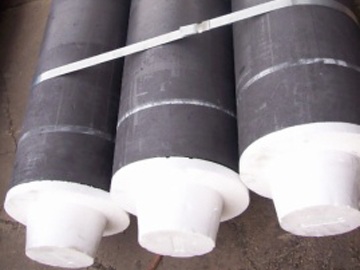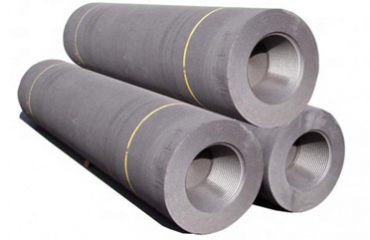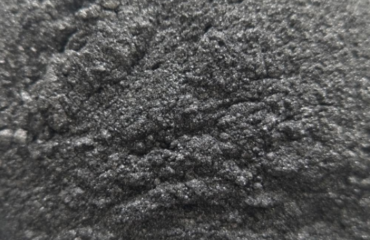
Compared with copper electrode, graphite electrode has the advantages of low electrode consumption, fast processing speed, good machining performance, high processing accuracy, small thermal deformation, light weight, easy surface treatment, high temperature resistance, high processing temperature, and electrode bonding. Although graphite is a very easy cutting material, the graphite material (hot working die steel) used as EDM electrode must have sufficient strength to avoid damage during operation and EDM processing. At the same time, the electrode shape (thin wall, small fillet, sharp change) also puts forward higher requirements for the grain size and strength of graphite electrode, which leads to the easy disintegration of graphite workpiece and the easy wear of cutting tools in the processing process.
Tool wear is the most important problem in graphite electrode machining. Wear not only affects the cost of tool loss, processing time and processing quality, but also affects the surface quality of workpiece materials processed by electrode EDM. It is an important parameter to optimize high-speed machining The main tool wear areas in the processing of graphite gun electrode materials are rake face and rake face. On the rake face, the impact contact between the tool and the broken chip area produces impact abrasive wear, and the chip sliding along the tool surface produces sliding friction wear. Several factors affecting tool wear are as follows.
(1) Tool material tool material (die steel) is the fundamental factor that determines the cutting performance of tools, which has a great impact on machining efficiency, machining quality, machining cost and tool durability. The harder the tool material, the better its wear resistance, the higher the hardness, the lower the impact toughness and the more brittle the material. For graphite cutting tools, the common TiAIN coating with relatively better toughness can be appropriately selected, that is, the coating with slightly higher cobalt content; For the graphite cutter coated with gold erasure stone, the one with relatively better hardness, that is, the one with slightly lower cobalt content, can be selected.
(2) Geometric angle of the cutting tool choosing the appropriate geometric angle of the graphite cutting tool helps to reduce the vibration of the cutting tool. On the contrary, the graphite workpiece is not easy to collapse;
① Front corner. When using negative rake angle to process graphite, j-j has good edge strength and good impact and friction resistance. With the decrease of the absolute value of negative rake angle, the wear area of the flank changes little, but it shows a decreasing trend as a whole. When using positive rake angle to process, with the increase of rake angle, the strength of the cutting edge is weakened, but the wear of the flank is intensified. When machining with negative rake angle, the cutting resistance is large and the cutting vibration is increased. When machining with large positive rake angle, the tool wear is serious and the cutting vibration is also large.
② Back corner. If the rake angle increases, the strength of the cutting edge decreases and the wear area of the flank increases gradually. After the cutting angle is too large, the tool vibration is strengthened.
③ Helix angle. When the helix angle is small, the cutting edge length of cutting graphite workpiece at the same time as all cutting edges is the longest, the cutting resistance is the largest, and the cutting impact force borne by the tool is the largest, so the tool wear, milling force and cutting vibration are the largest. When the helix angle is large, the direction of milling force deviates greatly from the workpiece surface, and the cutting impact caused by the disintegration of graphite material is intensified, so the tool wear, milling force and cutting vibration are also increased.
Therefore, the influence of tool angle change on tool wear, milling force and cutting vibration is the combination of front angle, back angle and helix angle, so we must pay more attention to it in selection. Through a large number of scientific tests on the machining characteristics of graphite materials, para tools optimize the geometric angle of relevant tools, so as to greatly improve the overall cutting performance of tools.
(3) Diamond coated tools have the advantages of high hardness, good wear resistance and low friction coefficient. At present, diamond coating is the best choice for graphite processing tools and can best reflect the superior performance of graphite tools; The advantage of diamond coated cemented carbide tool is that it combines the hardness of natural diamond with the strength and fracture toughness of cemented carbide; However, in China, the diamond coating technology is still in its infancy and the cost investment is very large, so the diamond coating will not have much development in the near future. However, on the basis of ordinary tools, we can optimize the angle and material selection of tools and improve the structure of ordinary coatings, which can be applied in graphite processing to some extent.
The geometric angle of diamond coated tools is essentially different from that of ordinary coated tools. Therefore, when designing diamond coated tools, due to the particularity of graphite processing, the geometric angle can be appropriately enlarged, the cutting groove can be enlarged, and the wear resistance of the cutting edge will not be reduced; Although the wear resistance of ordinary TiAIN coating is significantly higher than that of uncoated tools, compared with diamond coating, its geometric angle should be appropriately reduced when machining graphite to increase its wear resistance. For diamond coating, many coating companies in the world have invested a lot of manpower and material resources to research and develop relevant coating technology, but so far, foreign mature and economic coating companies are only limited to Europe; As an excellent graphite processing tool, para also uses the world’s most advanced coating technology to treat the surface of the tool, so as to ensure the processing life and the economy and practicability of the tool.
(4) The strengthening of tool edge and the passivation technology of tool edge are not generally valued by people, but also very important. There are micro notches (i.e. micro chipping and saw edge) in the edge of cemented carbide tool after grinding with diamond grinding wheel. Graphite high-speed cutting puts forward higher requirements for the performance and stability of the tool, especially the gold cut stone coated tool must go through the passivation treatment of the knife edge before coating, so as to ensure the firmness and service life of the coating. The purpose of tool passivation is to solve the defects of the micro notch on the edge of the tool after grinding, so as to reduce or eliminate its front value, so as to achieve the purpose of smoothness, smoothness, sharpness, firmness and durability.


